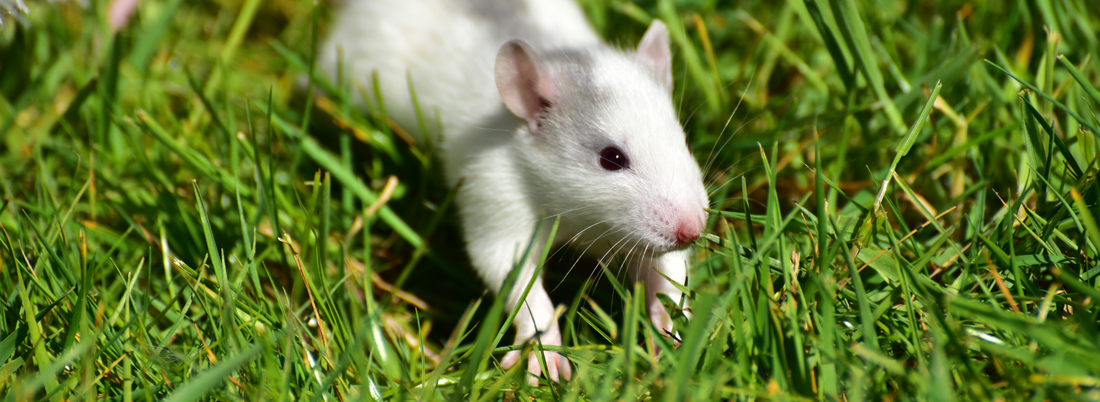The Intriguing World of Rat Behaviour
Rats, often misunderstood and underestimated, possess a rich and complex world of behaviours waiting to be explored. These small, intelligent creatures have captivated humans for centuries with their remarkable adaptability and social intricacies. In this introduction, we delve into the fascinating realm of rat behaviour, shedding light on the intricacies that shape their actions and interactions.
Decoding Rat Body Language: What Your Rat is Trying to Tell You
Rats, like many other animals, communicate extensively through body language. Understanding these subtle cues can provide invaluable insights into your rat's feelings, needs, and desires. By learning to decode rat body language, you can establish a deeper connection with your pet and ensure their well-being and happiness.
Ears
A rat's ears are highly expressive and can convey a wealth of information about their current state of mind. When relaxed and at ease, a rat's ears will be held upright and slightly forward. However, if your rat's ears are flattened against their head, it may indicate fear, anxiety, or aggression. Pay attention to the position of your rat's ears to gauge their emotional state and respond accordingly.
Eyes
The eyes are often referred to as the windows to the soul, and this holds true for rats as well. Bright, alert eyes signify a rat that is engaged and curious about their surroundings. Conversely, dull or squinting eyes may indicate discomfort, illness, or stress. Additionally, rapid blinking or excessive eye bulging could signal distress or pain.
Whiskers
Rats rely heavily on their whiskers to navigate their environment and sense potential dangers. When relaxed, a rat's whiskers will be extended outward, indicating a sense of comfort and security. However, if their whiskers are pulled back tightly against their face, it may suggest fear or uncertainty. Observing the position and movement of your rat's whiskers can provide valuable clues about their emotional state.
Posture
Pay close attention to your rat's body posture, as it can reveal a lot about how they are feeling. A relaxed and content rat will typically have a loose, fluid posture, with their body and tail held in a natural position. On the other hand, a rat that is feeling threatened or defensive may adopt a stiff, hunched posture, with their tail held tightly against their body. By observing your rat's posture, you can gauge their comfort level and respond accordingly to alleviate any stress or discomfort.
Vocalisations
While rats are not as vocal as some other animals, they do communicate through a variety of sounds, including chirps, squeaks, and hisses. Pay attention to the pitch, frequency, and intensity of your rat's vocalisations, as they can provide valuable insights into their emotional state. Happy, content rats may emit soft chirps or bruxing sounds, while distressed or agitated rats may squeak or hiss to express fear or discomfort.
Basically, decoding rat body language is essential for understanding and meeting the needs of your pet. By observing their ears, eyes, whiskers, posture, and vocalisations, you can gain valuable insights into their emotional state and respond accordingly to ensure their well-being and happiness.
Pet Enrichment and Your Rat's Mood
Now that we've explored the intricacies of rat body language, let's discuss how pet enrichment can positively impact your rat's mood and overall well-being. Enrichment activities, such as providing stimulating toys, creating obstacle courses, and offering novel experiences, play a crucial role in keeping your rat mentally and physically engaged.
Enrichment activities provide your rat with opportunities for exploration, problem-solving, and social interaction, all of which are essential for their cognitive development and emotional health. By incorporating enrichment into your rat's daily routine, you can alleviate boredom, reduce stress, and promote a sense of fulfilment and contentment.
Furthermore, enrichment activities can help strengthen the bond between you and your rat by providing opportunities for positive interaction and shared experiences. Whether it's engaging in a game of hide-and-seek, teaching your rat new tricks, or simply providing them with new toys to explore, enrichment activities offer endless possibilities for bonding and connection.
Incorporating enrichment into your rat's environment doesn't have to be complicated or expensive. Simple activities such as hiding treats for your rat to find, rotating their toys regularly to keep things interesting, and providing opportunities for physical exercise and mental stimulation can make a world of difference in their mood and overall quality of life.
Tackling Aggression: Strategies for Dealing with Territorial Behaviour
While pet rats are typically friendly and sociable animals, they may occasionally exhibit territorial aggression, especially in certain situations or environments. Understanding the root causes of territorial behaviour and implementing effective strategies to address it is crucial for maintaining a harmonious relationship with your rat. Here are some strategies for dealing with territorial aggression in pet rats:
Identify Triggers
The first step in addressing territorial aggression is to identify the specific triggers that provoke this behaviour in your rat. Common triggers may include intrusions into their living space, encounters with unfamiliar animals or humans, or changes in their environment. By pinpointing the triggers, you can take proactive measures to avoid or minimise them.
Provide Adequate Space
Ensuring that your rat has sufficient space and resources can help prevent territorial disputes. Provide multiple hiding spots, feeding areas, and enrichment opportunities to reduce competition and minimise stress. Additionally, consider the dynamics of group housing and provide separate living spaces if necessary to prevent conflicts between rats.
Establish Boundaries
Set clear boundaries with your rat to communicate acceptable behaviour and reinforce positive interactions. Use gentle redirection or distraction techniques to discourage territorial displays, such as puffing up or lunging. Consistency and patience are key when establishing boundaries, as it may take time for your rat to adjust to new expectations.
Positive Reinforcement
Reinforce desired behaviours through positive reinforcement techniques, such as rewarding calm and non-aggressive behaviour with treats or praise. Encourage your rat to engage in alternative activities, such as interactive play or training exercises, to redirect their focus away from territorial behaviours.
Avoid Punishment
Avoid using punishment or physical force to address territorial aggression, as this can escalate the situation and damage the trust between you and your rat. Instead, focus on positive reinforcement and gentle, non-confrontational approaches to modify behaviour. Seek guidance from a qualified animal behaviourist if you're unsure how to proceed.
Environmental Enrichment
Enrich your rat's environment with stimulating toys, puzzles, and activities to promote mental and physical stimulation. An enriched environment can help alleviate stress and reduce the likelihood of territorial behaviour by providing outlets for natural behaviours, such as exploration, foraging, and social interaction.
Monitor and Evaluate
Keep a close eye on your rat's behaviour and monitor for any signs of improvement or escalation. Adjust your strategies as needed based on your rat's responses and seek professional advice if the aggression persists or worsens despite your efforts.
By implementing these strategies and taking proactive steps to address territorial aggression, you can foster a positive and harmonious relationship with your pet rat while promoting their overall well-being and quality of life. With patience, understanding, and consistency, you can effectively tackle aggression and create a safe and nurturing environment for your furry friend.
Conclusion
In conclusion, "Rat-titude Adjustment: Understanding and Enhancing Rat Behaviour" offers a comprehensive insight into the multifaceted world of rat behaviour and provides valuable strategies for fostering a positive relationship with these intelligent and sociable creatures.
From decoding rat body language to implementing pet enrichment activities and tackling territorial aggression, this guide equips rat owners with the knowledge and tools necessary to nurture happy, healthy, and well-adjusted pets.
By understanding the intricacies of rat behaviour and responding thoughtfully to their needs, rat owners can forge deep bonds with their furry companions and create enriching environments that promote physical, mental, and emotional well-being.
Remember, every rat is unique, and it may take time and patience to fully understand and address their individual behaviours and preferences. With dedication and care, however, the rewards of sharing your life with these fascinating creatures are boundless.
So whether you're a seasoned rat enthusiast or a newcomer to the world of pet rats, embrace the journey of discovery and enjoy the countless joys that come with welcoming these delightful companions into your life.

